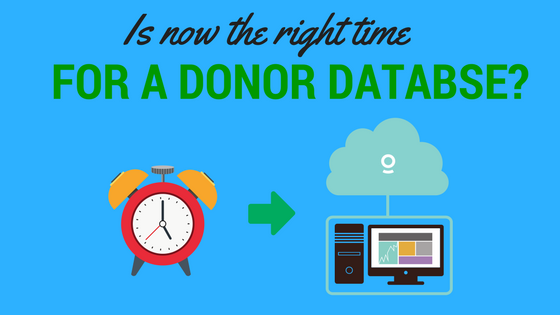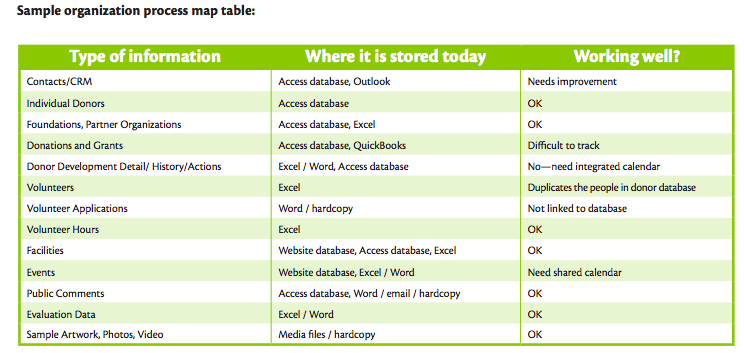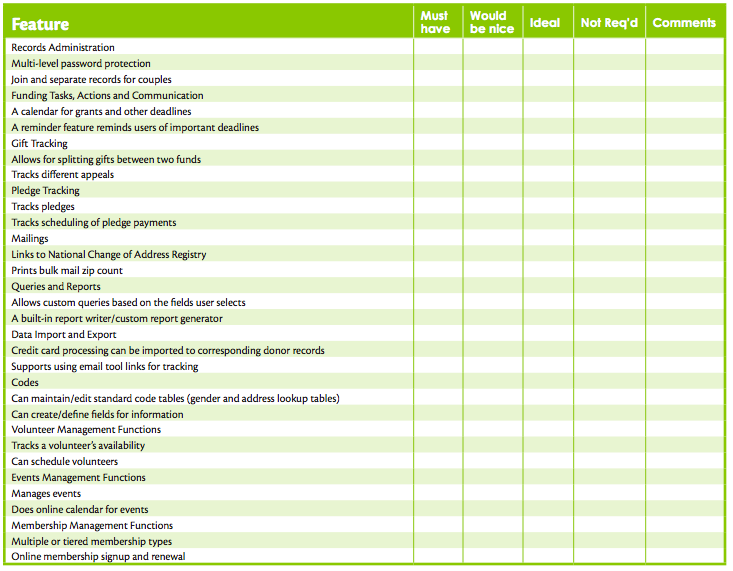Little Green Light is a cloud-based donor management system for fundraisers.
Subscribe to get our latest product updates, best practices and tips to grow your nonprofit.

Ah, the question that strikes fear in the hearts of many nonprofit development staff! I’ll bet you’ve heard plenty of reasons why this is so, a few of which may include:
“Donor databases are so expensive, and we don’t have money in the budget.”
“The thought of moving my data scares me to death. What if the data gets lost, and all the work I’ve done goes to waste?”
“I am not a database expert. I’m a development professional, and I don’t have time to fiddle with a complicated database.”
“I don’t have time to learn a new system—I have a major event next month and my year-end mailing needs to go out right after that.”
Any of this sound familiar? I’m sure many of us who have worked or are working in “small development shops,” single-handedly managing the organization’s advancement efforts, can relate.
So, how is it possible to move past the fear and tackle a problem that can feel so overwhelming? In part, it comes down to two things:
Breaking down some myths about searching for a donor management system
Learning how to assess if your organization is in need of one in the first place
Notice the word invest. Invest means that you need to allocate some of your precious time and resources toward this decision. You may not have it in the budget, and you most likely are working hard to juggle several projects already. I get it. I can promise you, however, this particular investment will pay off.
I’ll guide you through the questions you should ask yourself about getting a donor management system, and I’ll even provide you with some helpful tips from leading fundraising experts. That way, should you need help convincing other members of your team that you need a change, you’ll have expert advice to share with them.
Here are some of the questions we’ll answer in this article:
Do I even need a donor management system?
What do I need from a donor management system?
Is now the right time to implement a new donor management system?
Do you even need a donor database?
Pamela Grow, a well-respected fundraising coach for small nonprofits, is a firm believer in the need for a donor database. In a recent article, Grow says, “Nonprofit development is, by its very nature, data driven. You simply cannot function as a donor-centric organization without a donor database.”
Consider some of these scenarios
You hold an annual event but have no record of who’s been invited in the past, whether they attended, or which businesses provided sponsorships.
You’ve sent out fall appeal letters and would like to make some personal follow-up calls to your top prospects. But you don’t know who’s previously donated, and even if you did, you don’t have current phone numbers for them.
One of your organization’s top donors, who’s made a gift every year since you opened, has called to say that she doesn’t want to receive any further communication from you. This is because she’s received three letters addressed to her deceased husband, after requesting that his name be removed from future correspondence.
You’re asked to pull a list of everyone who’s given at least $100 to each of the past three annual giving campaigns. You have the data, but it’s spread across multiple spreadsheets, and comparing donors from one spreadsheet to the other takes hours.
These scenarios and more can be avoided with the use of a good donor management system.
So, are you with me? Do you agree that it’s important to have a donor management system? Will any old system do? Can you make do with a free system, do you need to invest in the “Cadillac version,” or will a Fiat do the job?
Assuming your organization does need a donor management system, let’s talk about the things to consider when choosing one.
Each and every organization is unique, and what they need to and are able to accomplish will vary. Recommendations from other organizations that operate similarly to yours are great, but be careful about choosing a system because all the well-known organizations are using it. It may be a great system for them because they have the capacity to manage it. Make sure you match your organization’s needs with the features/functions of the system, and be sure your organization has the capacity to manage the system now and in the future. Following these three steps will get you on your way.
Step 1: Assess
To begin, you’ll want to assess your organization’s data needs and usage and document how that data is being managed currently. Consider the types of information you currently utilize, how they are being stored, and if that current process is working for you.
This sample of an organization process map from NPowerSeattle (now 501Commons) may help get you started:

Taken from http://www.fundraising123.org/files/donor+management+toolkit+book.pdf
Step 2: Prioritize
Next, create a checklist to help you document your donor management needs, being sure to differentiate what’s needed (must have) from what’s possible (nice to have). View this sample listing of features to include on your checklist (and add your own as well):

Taken from http://www.fundraising123.org/files/donor+management+toolkit+book.pdf
Step 3: Review systems
Now that you’ve identified what is needed for your organization, it’s time to search for a system that will work for you. It’s important that you find the donor management system that is right for you and your organization. Not every system will meet your needs. How can you find the best solution? Here are a few tips that will help:
Do preliminary research online
Talk with other nonprofit development professionals in organizations similar to yours
Use these resources:
www.Idealware.org: This site offers reports and articles aimed at helping nonprofits locate the best technology resources for them. Idealware completed a Consumer’s Guide to Low-Cost Donor Management Systems in May 2017 that’s helpful to reference.
www.techsoup.org: This online community is a great resource for information on nonprofit technology, offering numerous articles, discussion groups, how-tos, and software donations to eligible nonprofits.
www.capterra.com: This free service provides a listing of software solutions for all types of businesses, including non-profits, and has independent reviews for each of the donor management solutions.
It’s important to consider the timing of acquiring a new system and plan for it as best as possible. But, let’s be honest. There is never any “downtime” in your organization, right? So it’s important to recognize that it’ll take time and to plan for that. What does that mean, exactly? My recommendation would be to allocate 2 to 3 hours per week over the next month to evaluating your organization’s needs, exploring what’s available, and planning for the transition. Scheduling these hours as meeting times on your calendar might help make it stick.
A couple of final points
Consider how your organization’s fundraising plan is impacted by data. (If you don’t have a fundraising plan, check out the Fundraising Authority’s article on how to develop one.) For example, if you’re counting on your annual gala to bring in the lion’s share of revenue for the year, evaluate what types of data are needed to make the event a success and review how your current database helps/hinders that success.
I hope this article helps you determine whether your nonprofit organization needs a donor management system. I also hope you find the resources provided useful in exploring if it’s the right time to find one.
Here at Little Green Light, we understand that lots of questions often arise as you consider a donor management system. We strive hard to make sure that you can easily locate the information you need, either through visiting our Knowledge Base or our website, without needing to speak to a “sales person.” LGL is a bit untraditional in this way—we want to make it as easy as possible for you to explore what LGL has to offer, and to know what it will cost to use, without needing to engage in a high-pressured sales pitch. We believe in this approach so much, we don’t even employ sales people! However, we do invite you to contact us with any questions you have as you’re exploring our product. We also encourage you to join a free demo or give LGL a try for free so you can test it out for yourself.
Ready to try LGL? Get your first 30 days free. No credit card required.